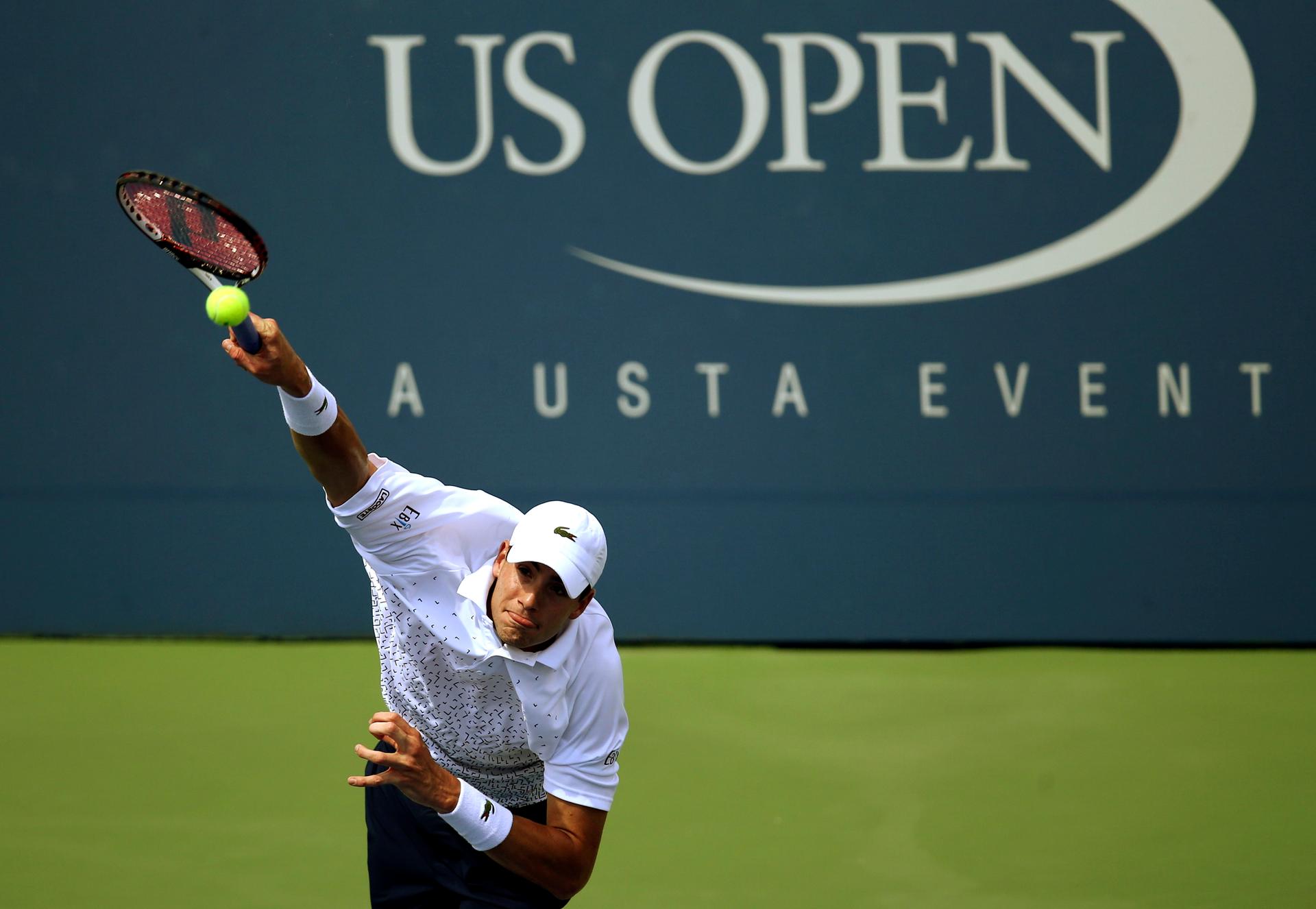Why have the American men’s tennis stars disappeared?
American John Isner serves during a match at the 2014 US Open. Isner is only one of two Americans among the top 50 men’s players, and has never appeared in the final of a major tournament.
Last night at the US Open, tennis fans saw the sport at its very best as Roger Federer defeated crowd-pleaser Gael Monfils with a classic comeback. The result opens the door for another showdown between Federer and Novak Djokovic of Serbia.
And while Serena Williams looks like she may win another title on the women's side thhis weekend, we're wondering why there’s so little American talent in the men’s top 50. Right now, there are only two men from the United States in those ranks, and neither are serious challengers for major titles.
According to Mark McEnroe, brother of former tennis star John McEnroe, American men aren't a lost cause — despite the current numbers.
“We have a number of excellent junior players who are competing well and are poised to join the top hundred, and hopefully someday higher,” says McEnroe, who runs the Johnny Mac Project, a non-profit designed to expose low-income children to tennis. “But at the moment, it is a bit of a desert out there."
He thinks a lot of that is due to the rise in global tennis talent. "Our position is that it’s not so much that US tennis has fallen behind," he says, "it’s that the rest of the world has caught up.”
Of course, things look a lot different for American women. There are eight Americans among the top 50 female players, and the Williams sisters are longtime juggernauts of the game. McEnroe thinks that is a trend that's likely to continue.
“It appears to me that the women are better poised to bring more US players, besides the Williams sisters, into the top 100,” McEnroe says. “I think there aren’t as many opportunities for female athletes, particularly at the professional level, to have the financial success that the Williams sisters have. [Because of that,] I think that, in this country, young female athletes are drawn to tennis in a slightly higher percentage than the men are.”
McEnroe’s brother Patrick resigned this week as the head of player development at the United States Tennis Association (USTA.) Mark acknowledges that his brother is “evidently” taking some of the blame for lackluster American rankings.
“I haven’t spoken to him since I read about the [resignation] announcement, nor anyone at the USTA,” McEnroe says. “To say that he’s a convenient fall guy, that might be a little strong. But clearly, his job when he was hired was to bring US tennis back. And I think that he’s done a very good job at laying the groundwork.”
McEnroe says there is no formula for producing a successful tennis player. He points out the the Williams sisters were trained by their father in Houston, Texas, and did not participate in many junior tournaments. Roger Federer grew up in an upper-middle-class community in Switzerland and trained at private clubs. Rafael Nadal’s primary coach was his uncle, soccer star Miguel Ángel Nadal.
“At the very top, everyone has a different story,” he says. “There’s no cookie-cutter approach that anyone has found yet that has turned out fives and tens of the top, top players."
This story originally aired on PRI's The Takeaway, a public radio program that invites you to be a part of the American conversation.
